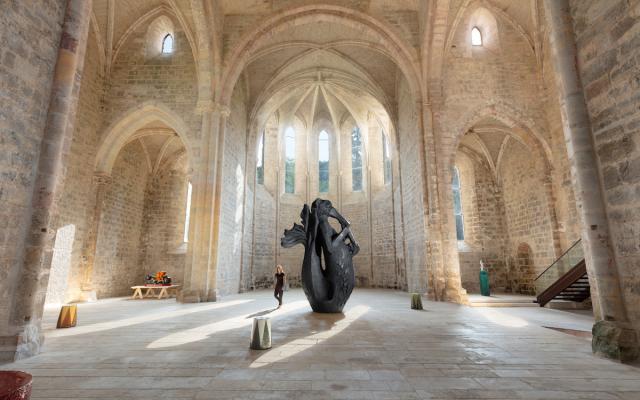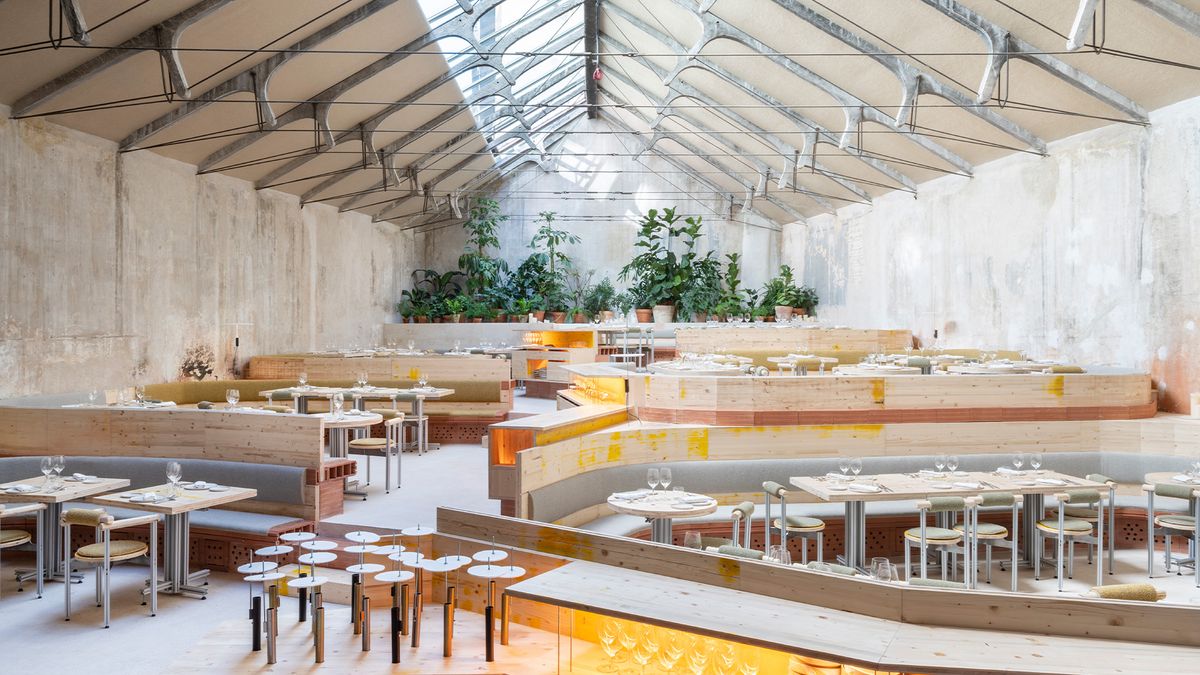Friction / Where Is Lavatory?
- Film & Video (Film & Video)
Taiyo Kimura
The wall installation Friction/Where is Lavatory (2005) plays off anxieties about time but utilizes sound to create a disconcerting experience of viewership: comprised of dozens of wall clocks sutured together, the work presents a monstrous vision of time at its most monumental. The clocks, however, are effectively broken, altered so that the second hand of each clock obstructs one another as they sweep across the face. Often combining a sense of physical incongruity and visceral displeasure with touches of humor and cruelty, Taiyo utilizes conceptual approaches as a means of challenging preconceived ideas about social organization. His work frequently interrogates how we organize space and time through discretely measured units, and in parodying that obsessively precise ways that we mark our very existence – through instruments that direct our bodily movements or denote our sense of time – Taiyo invites us to consider our relationship not just to devices but to our very sense of ontological being.
Taiyo Kimura works with sculpture, video, and installation and uses everyday objects, humor, and music to questions the meaning of ordinary life. He studied at the Sokei Academy of Fine Art and Design in Tokyo. Kimura’s solo exhibitions include “Taiyo Kimura: 55 Bethune Street, NYC” ARTCOURT Gallery, Osaka, Japan (2014); “Taiyo Kimura – new works” nca | nichido contemporary art, Tokyo (2012); Propagation, Branch Gallery, Durham, N.C. (2008); Japanda: A Cross-Cultural Curatorial Exchange, Part One, Art Gallery of Southwestern Manitoba, Canada (2007); Taiyo Kimura, Yokohama Portside Gallery, Yokohama, Japan (2005); and Taiyo Kimura: Unpleasant Spaces, Württembergischer Kunstverein, Stuttgart, Germany (2004).
Colors:
Related works sharing similar palette

© » LE MONDE
Le jeu d’illusions grinçantes du photographe Jeff Wall, à Bâle Cet article vous est offert Pour lire gratuitement cet article réservé aux abonnés, connectez-vous Se connecter Vous n'êtes pas inscrit sur Le Monde ? Inscrivez-vous gratuitement Article réservé aux abonnés « Boy Falls From Tree » (2010), de Jeff Wall...

© » KADIST
Masaya Chiba
2011Fairy #2 (2011) depicts a surreal scene of roughly assembled household ephemera, potted plants, and a faintly visible figure rendered in thin red line...
© » KADIST
Rabih Mroué
2012The Pixelated Revolution is a lecture-performance by artist Rabih Mroué about the use of mobile phones during the Syrian revolution...

© » KADIST
Allora & Calzadilla
2004This series of photographs is part of the body of work Allora & Calzadilla made regarding the situation in Vieques, an island off the mainland of Puerto Rico used for the 60 years by the U...

© » KADIST
Daniel Boccato
2016Parrot Drawings or Paintings look like children’s drawings and seem quite innocent...

© » ARTS EQUATOR
Latiff Mohidin’s “Langkawi”: The Within and Beyond | ArtsEquator Thinking and Talking about Arts and Culture in Southeast Asia Articles Image: Chan + Hori Gallery July 10, 2018 By Gerald Sim (1,500 words, eight minute read) As with any thought-provoking installation, Latiff Mohidin’s “Langkawi” series, on show at Chan+Hori Contemporary , evokes a large range of perceptions from its audience...

© » KADIST
Rodrigo Torres
2016In his Conceito abstrato series, however, Rodrigo Torres turns to the abstract, using the shapes, numbers, lines, and subtle colors of international currencies to create non-representational forms with lavish geometries and baroque curving forms....

© » ART & OBJECT
The Top Art Exhibitions of 2023 | Art & Object Skip to main content Subscribe to our free e-letter! Webform Your Email Address Role Art Collector/Enthusiast Artist Art World Professional Academic Country USA Afghanistan Albania Algeria American Samoa Andorra Angola Anguilla Antarctica Antigua & Barbuda Argentina Armenia Aruba Ascension Island Australia Austria Azerbaijan Bahamas Bahrain Bangladesh Barbados Belarus Belgium Belize Benin Bermuda Bhutan Bolivia Bosnia & Herzegovina Botswana Bouvet Island Brazil British Indian Ocean Territory British Virgin Islands Brunei Bulgaria Burkina Faso Burundi Cambodia Cameroon Canada Canary Islands Cape Verde Caribbean Netherlands Cayman Islands Central African Republic Ceuta & Melilla Chad Chile China Christmas Island Clipperton Island Cocos (Keeling) Islands Colombia Comoros Congo - Brazzaville Congo - Kinshasa Cook Islands Costa Rica Croatia Cuba Curaçao Cyprus Czechia Côte d’Ivoire Denmark Diego Garcia Djibouti Dominica Dominican Republic Ecuador Egypt El Salvador Equatorial Guinea Eritrea Estonia Eswatini Ethiopia Falkland Islands Faroe Islands Fiji Finland France French Guiana French Polynesia French Southern Territories Gabon Gambia Georgia Germany Ghana Gibraltar Greece Greenland Grenada Guadeloupe Guam Guatemala Guernsey Guinea Guinea-Bissau Guyana Haiti Heard & McDonald Islands Honduras Hong Kong SAR China Hungary Iceland India Indonesia Iran Iraq Ireland Isle of Man Israel Italy Jamaica Japan Jersey Jordan Kazakhstan Kenya Kiribati Kosovo Kuwait Kyrgyzstan Laos Latvia Lebanon Lesotho Liberia Libya Liechtenstein Lithuania Luxembourg Macao SAR China Madagascar Malawi Malaysia Maldives Mali Malta Marshall Islands Martinique Mauritania Mauritius Mayotte Mexico Micronesia Moldova Monaco Mongolia Montenegro Montserrat Morocco Mozambique Myanmar (Burma) Namibia Nauru Nepal Netherlands Netherlands Antilles New Caledonia New Zealand Nicaragua Niger Nigeria Niue Norfolk Island Northern Mariana Islands North Korea North Macedonia Norway Oman Outlying Oceania Pakistan Palau Palestinian Territories Panama Papua New Guinea Paraguay Peru Philippines Pitcairn Islands Poland Portugal Puerto Rico Qatar Romania Russia Rwanda Réunion Samoa San Marino Saudi Arabia Senegal Serbia Seychelles Sierra Leone Singapore Sint Maarten Slovakia Slovenia Solomon Islands Somalia South Africa South Georgia & South Sandwich Islands South Korea South Sudan Spain Sri Lanka St...

© » LE MONDE
« On ne démocratise pas le rapport à la musique, à la danse en les réduisant à un “éveil musical ou dansant” » Offrir Le Monde F in octobre tombait une nouvelle pour le moins sidérante : le directeur académique des services de l’éducation nationale en Indre-et-Loire annonçait le démantèlement des classes à horaires aménagés musique et danse ( CHAM et CHAD ), de la 6 e à la 3 e , du lycée Paul-Louis-Courier, de Tours, au nom de la mixité sociale et scolaire...

© » ARTS EQUATOR
The working processes of artists: Sabrina Poon | ArtsEquator Thinking and Talking about Arts and Culture in Southeast Asia Articles April 27, 2020 Singaporean filmmaker Sabrina Poon, better known as Spoon, talks about her work and the value of storytelling by breaking down three of her short films – Sylvia , Hello Uncle and Pa ...

© » ARTS EQUATOR
Weekly Picks: Indonesia (9 - 15 July 2018) | ArtsEquator Thinking and Talking about Arts and Culture in Southeast Asia Indonesia July 9, 2018 Top Picks of Indonesia art events in Bali, Yogyakarta and Jakarta from 9 – 15 July 2018 Titian Art Space in Bali presents the exhibition Mokoh for the house of Mondo ...









